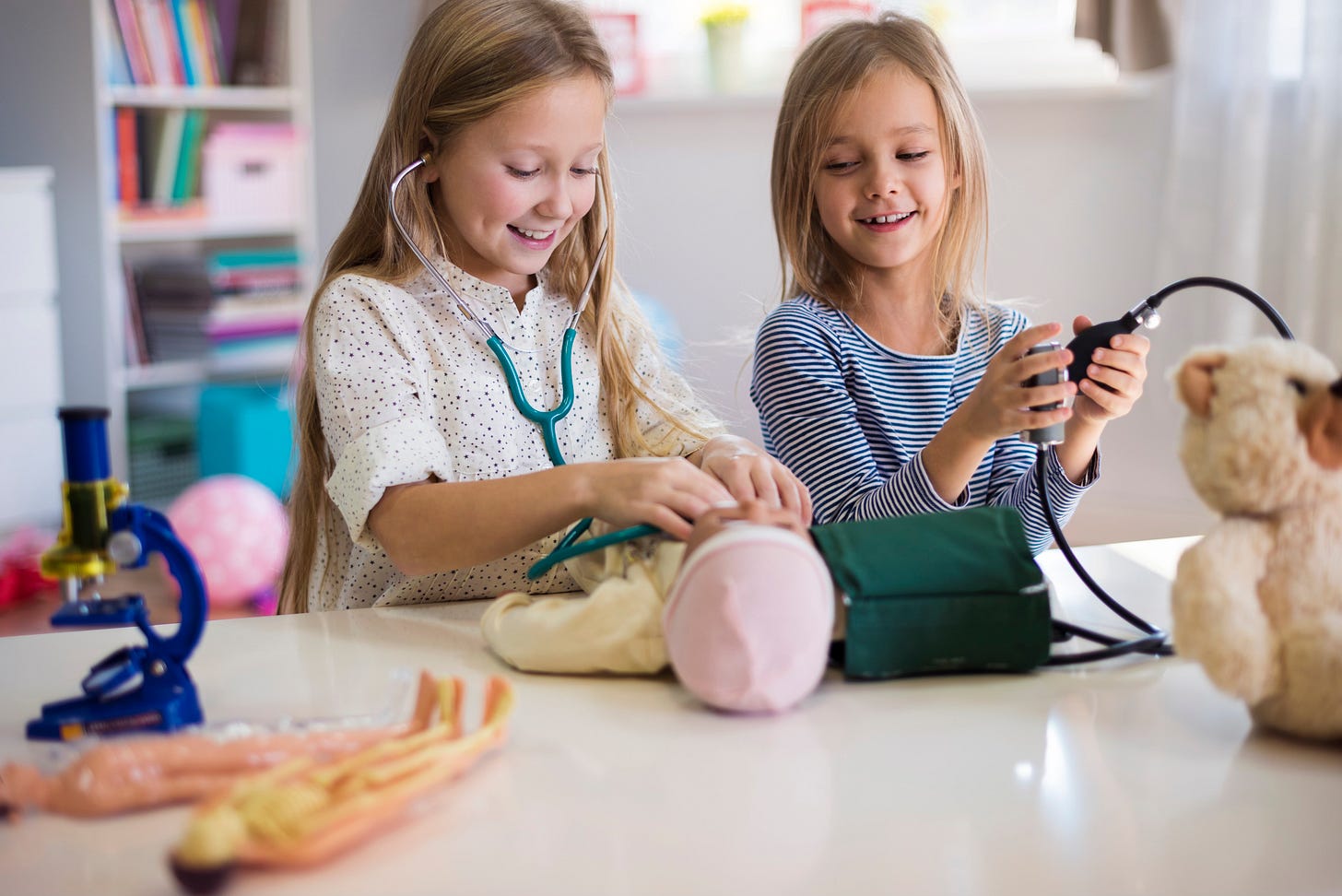We were at school family night, a whirlwind of classroom visits open to the community, where departments put out displays or projects or put on performances. I’d expected to see typical displays—maybe some posters, some student work, the usual. But as we passed by the high school science room, there stood a skeleton in the hall. Just casually leaning against a pole, like he’d been there all along, waiting for someone to ask questions.
And right on cue, my three-year-old granddaughter, always full of curiosity, stopped in her tracks. She stared at the skeleton for a moment, her eyes wide, then turned to me with the most serious face.
“What happened to him?” she asked.
Indeed. What did happen to him? Did he live a long, full life? Was he part of some ancient mystery? Was he a teacher?
This wasn’t the place to crack open some deep philosophical truth or the mysteries of life and death for a preschooler. I couldn’t whip up something punny that quickly either.
Why don’t skeletons fight each other? They don’t have the guts.
What do you call a skeleton who won’t work? Lazy bones!
Why did the skeleton go to the school family night alone? Because he had no body to go with him.
So, I pointed to a display by the art room, and we scooted down the hall on our tour, leaving the skeleton behind—but I’m pretty sure we left behind some deeper questions.
I definitely have deeper questions—feel them in my bones.
Those bones have been reminding me more often that they exist. I haven’t thought about them all that much for fifty-five years. But here I am getting up every morning and wondering which ankle or wrist will yell at me today. One knee creaks more than a rusty iron gate, and I’m just going to live in denial about that for a while.
After a painful couple of weeks with an arthritis flare-up, I’m grateful for the little things: being able to wear shoes instead of Crocs without ankle pain, being able to button my pants without hand pain (slip-on jeggings are really my friend, and you’ll probably want to read the post about that), sitting up and taking nourishment.
Oh, for Pete’s sake. I sound like my grandfather now.
I think I’m also about the age where my grandmother started using the phrase, “I yusta-could.” So let’s just move right along here.
It’s kind of weird, but in some ways, I’m strangely grateful for the achy bones. It’s a signal to slow down, listen to what I need, and support my body with rest and care. Pain or discomfort can be distracting, but it can also be a call to remember to stay in the moment. To appreciate that achy joints are signs of life. Reminders to appreciate our youthfulness until the next generation or the one after that bring the sparkle to our days just as our own vitality begins to fade.
A sparkle as simple as the question, “What happened to him?”
A grandchild’s giggles are a powerful antidote to any discomfort my bones bring me. Someday, when someone asks, “What happened to her?” I hope the answer is, “She lived to the fullest, laughed often, and loved like Jesus.”
You can put that on a sign by my bones.
What unexpectedly makes you feel the most alive and grateful today?






I absolutely love and relate to this. Thank you for the perspective reminder!